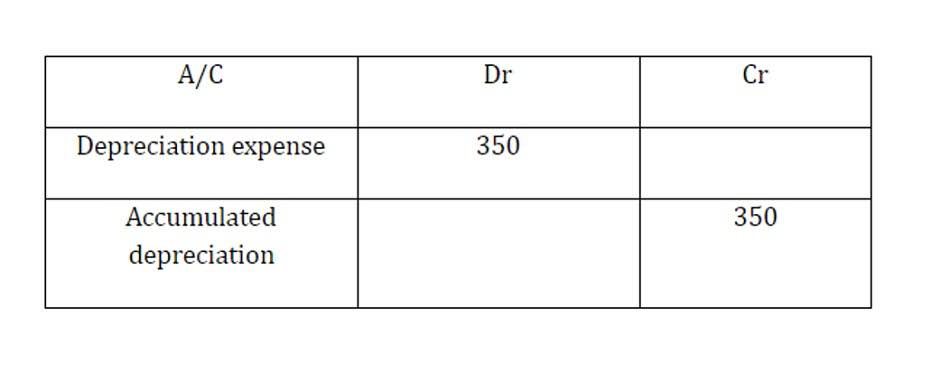
Historically, these calculations were performed manually, but software and online resources have streamlined the process, enhancing accuracy and efficiency. Understanding this net value allows businesses to make informed decisions about asset replacement, expansion plans, and overall financial strategies. Pre-tax salvage value represents the estimated selling price of an asset at the end of its useful life without considering tax implications. The applicable capital gains tax rate depends on the asset’s holding period and prevailing tax laws. In summary, the insights derived HOA Accounting from an after-tax salvage value calculator directly contribute to more informed decision-making across various financial domains.
A Comprehensive Guide to Integrated Business Planning (IBP)
Apply the appropriate tax rate to the taxable gain or loss to calculate the tax unearned revenue impact.7. Subtract the tax impact from the estimated salvage value to find the salvage value after tax. In summary, understanding net proceeds as the ultimate financial benefit derived from asset disposal is paramount for effective financial management. Challenges in accurately estimating disposal costs and applicable taxes can lead to significant discrepancies in projected versus actual returns. Therefore, careful consideration of these factors is critical for financial success.

Depreciation and After-Tax Salvage Value Assumptions
- Tax authorities, like the Internal Revenue Service (IRS) in the United States, impose specific rules regarding depreciation and salvage value.
- Therefore, the DDB method would record depreciation expenses at (20% × 2) or 40% of the remaining depreciable amount per year.
- An after-tax salvage value calculator provides this critical information, empowering stakeholders to make strategic decisions aligned with their financial objectives.
- Determining the after-tax salvage value is crucial for accurate financial planning and decision-making.
When calculating after-tax salvage value, it takes into account the tax implications which impact the net value you receive from disposing of an asset. Determining the after-tax salvage value is crucial for accurate financial planning and decision-making. In this article, we will dive into the process and provide insights on how to find the after-tax salvage value. Salvage value plays a crucial role in determining the worth of an asset at the end of its useful life. It represents the estimated value of an asset when it is no longer useful or productive to a company. Understanding salvage value is significant as it influences various financial decisions regarding asset management and depreciation.
- Learn how to calculate deferred revenue for your business simply and effectively, ensuring accurate financial tracking.
- Challenges arise when tax laws change or when dealing with complex asset classes, underscoring the need for diligent research and potentially professional tax advice.
- Market demand for similar assets affects their resale price, with higher demand typically leading to a higher salvage value, influencing the asset’s worth at the end of its useful life.
- When salvage value changes, it may cause a change in the amount of depreciation expense you can deduct.
- Learn how to calculate Z spread in finance with our step-by-step guide, covering credit spreads, bond valuation, and risk management strategies.
\(\$ 8,400,000\) and will be sold for \(\$ 1,600,000\) at the end of the project.
- One of the first things you should do after purchasing a depreciable asset is to recording inventory journal entries in your books examples create a depreciation schedule.
- The first step is to determine this value by determining market prices for similar assets, referencing professional appraisals, or negotiating with potential buyers.
- When an asset reaches the end of its useful life, determining its salvage value is crucial for financial planning.
- Then, subtract the asset’s book value (original cost minus accumulated depreciation) from the net selling price to determine the gain or loss on the sale.4.
The after-tax salvage value is the net value of an asset after it has been sold and all related taxes have been deducted. It is a critical component in assessing the profitability of an investment and the financial impact of disposing of an asset. Salvage value is a concept that holds significant importance in the world of business. This value plays a crucial role in financial decision-making as it affects various aspects such as depreciation, asset disposal, and capital budgeting. Understanding the definition and significance of salvage value helps business owners and managers make informed choices and plan for the future.

Some methods make the item lose more value at the start (accelerated methods), like declining balance, double-declining balance, and sum-of-the-years-digits. The depreciable amount is like the total loss of value after all the loss has been recorded. Use the applicable income tax rate for the asset sale to calculate the after-tax salvage value accurately. This concept is crucial in accounting and financial after tax salvage value planning, as it affects depreciation calculations and the overall valuation of a company’s assets.

How to calculate after-tax salvage value?

We plan to cover the PreK-12 and Higher Education EdTech sectors and provide our readers with the latest news and opinion on the subject. From time to time, I will invite other voices to weigh in on important issues in EdTech. We hope to provide a well-rounded, multi-faceted look at the past, present, the future of EdTech in the US and internationally. The salvage calculator reduces the loss and assists in making a decision before all the useful life of the assist has been passed. The salvage or the residual value is the book value of an asset after all the depreciation has been fully expired. If you don’t receive the email, be sure to check your spam folder before requesting the files again.
Formula: after-tax net cash flows
Inflation can impact the purchasing power of the after-tax salvage value over time, so it’s important to consider inflation when planning for asset disposal. Salvage value can be estimated based on factors such as the asset’s age, condition, and market demand. The second field is for the “Annual Depreciation Rate (%).” This is the percentage by which the asset’s value decreases each year.



